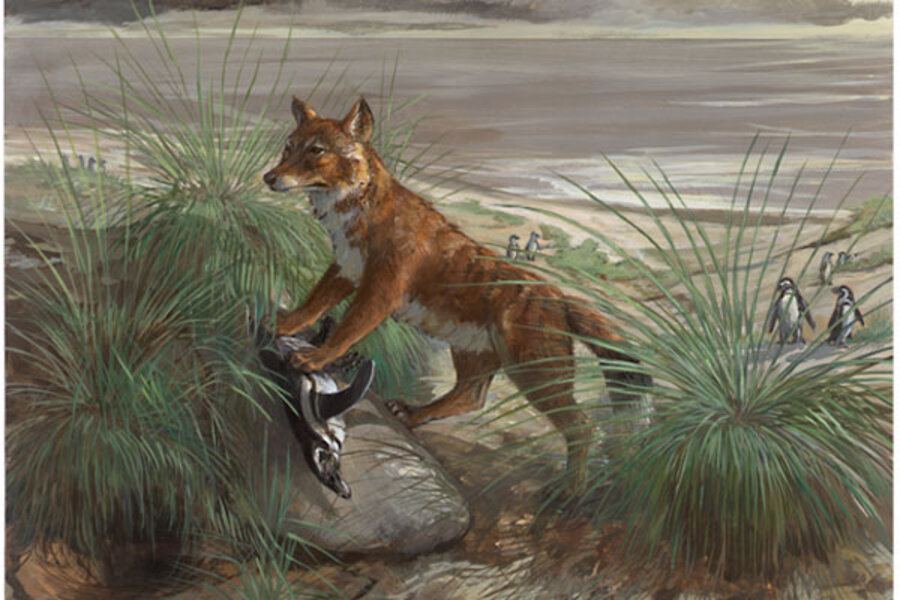How did those wolves get to the Falkland Islands? Scientists may have an answer.
The mystery surrounding the origin of a wolflike predator that once lived near Antarctica — a puzzle that stumped even Charles Darwin — has now been solved, researchers say.
The extinct carnivore apparently made its way to islands hundreds of miles from the nearest continent by crossing the frozen sea thousands of years ago, scientists explained.
The reddish coyote-sized Falkland Islands wolf was the only mammal native to the Falkland Islands far off the east coast of Argentina. The foxlike predator lived on seals, penguins and sea birds until hunters exterminated it in 1876.
The existence of the Falklands wolf perplexed Darwin when he first encountered it in 1834. "How did this great big carnivore arrive to a set of islands 460 kilometers (285 miles) from the nearest mainland when no other terrestrial mammal did?" asked researcher Alan Cooper, an evolutionary biologist at the University of Adelaide in Australia. "If it came by a land bridge, then the islands should've been covered with rodents as well, since South America is rodent central."
"It was incredibly tame — it swam out to meet sailors, wagging its tail," Cooper told LiveScience. "That led to suggestions that it was a semi-domesticated dog that Native Americans took out while hunting, explaining how it got to the Falklands when there were no other mammals there." [Gallery: Photos Reveal Amazing Wolves]
However, past analysis of DNA from museum specimens of the Falklands wolf, including one that Darwin collected, revealed it was not a dog after all. Instead, its nearest living ancestor was the maned wolf (Chrysocyon brachyurus) from the South American savannas, an odd predator resembling a red fox with almost stiltlike legs.
To help solve the mystery of how the Falklands wolf colonized the islands, Cooper and his colleagues compared its DNA with remains of what seemed like its closest extinct mainland relative, Dusicyon avus. This carnivore is similar to the Falklands wolf, save for smaller teeth and jaws.
The analysis suggested the Falklands wolf did not become isolated from its mainland cousins until about 16,000 years ago, before scientists think humans arrived this far south in South America. This time coincided with the last height of the ice age, when glaciers covered large portions of the planet.
"The sea levels around the world were really low then, since all the water was frozen onto icecaps — in fact, they were about 130 meters (425 feet) lower than currently," Cooper said.
The researchers then sleuthed through past research and found references to now-underwater terraces of rock off the coast of Argentina that would have created a narrow, shallow marine strait back when sea levels were lower. "This strait would've been only 20 to 30 kilometers (12 to 18 miles) wide, but when it was frozen over during really cold periods, the Falklands wolf could've effectively walked across the strait to the islands," Cooper said.
Although the ancestors of the Falklands wolf apparently proved more than willing to wander across this bridge, "rodents don't like walking across large amounts of ice," Cooper said, explaining their absence from the islands.
The scientists detailed their findings online March 5 in the journal Nature Communications.
Follow us on Twitter @livescience, Facebook or Google+. Original article on LiveScience.com.
- 25 Amazing Ancient Beasts
- 6 Strange Species Discovered in Museums
- Image Gallery: One-of-a-Kind Places on Earth
Copyright 2013 LiveScience, a TechMediaNetwork company. All rights reserved. This material may not be published, broadcast, rewritten or redistributed.






